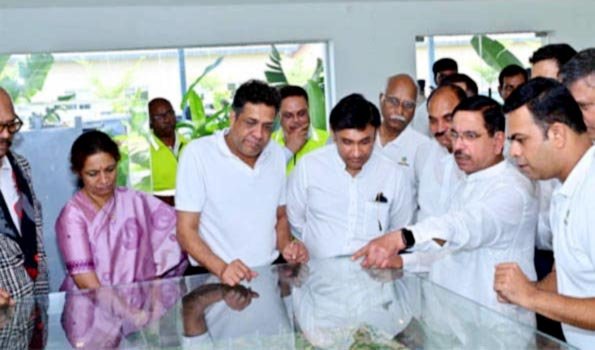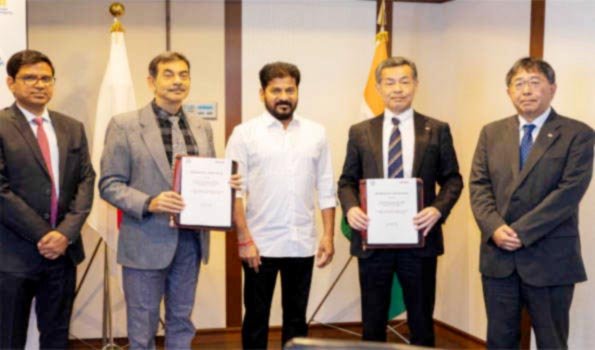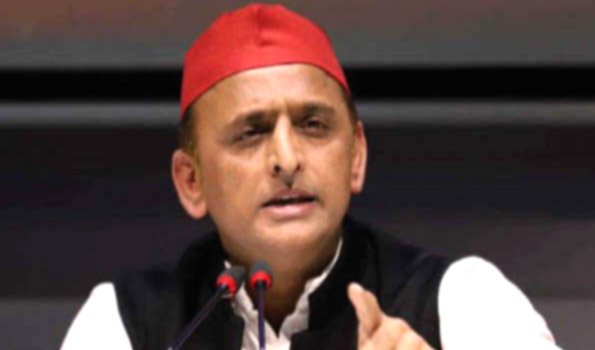New Delhi, Aug 10 (UNI) Union Home Minister and Minister of Cooperation Amit Shah on Saturday said the government has set a target of 20 percent ethanol blending by 2030, but this will be achieved much before by 2025-26.
He said that when Biofuel alliance will create worldwide awareness of benefits of ethanol blending, the biggest beneficiary will be India’s sugarcane farmers and sugar mills.
Speaking at the Sugar Industry Symposium and National Efficiency Awards 2022-23 function of NFCSF here, Shah said ethanol production from the sugar industry was 38 crore litres in 2013-14, which has increased to 370 crore litres today.
He said that out of about 5,000 crore litres of petrol sold, the requirement of ethanol will be one thousand crore litres.
“We should work towards making sugar mills viable. The government is ready to extend all possible help to set up multidimensional biofuel production plants. NAFED will procure 100 per cent maize and pulses from all farmers at minimum support price (MSP). The prosperity of farmers is our goal,” Shah said.
He said that for ethanol made from maize and bamboo, the government has kept the highest rate of Rs 71.86 per litre.
Shah said that a policy decision of the Modi government on ethanol-blending has reduced the import bill of petrol, improved the environment, benefited farmers and increased the profits of sugar mills.
“Modi government has ensured multi-faceted benefits to four sectors with the important decision of allowing 20 percent blending. It is constantly monitored, by the Prime Minister himself, through the Group of Ministers which reviews and takes decisions every three months and that is why we have been able to achieve the targets in ethanol blending much before time, the Home Minister said.
Shah said, “Cooperative sugar mills have contributed about eight per cent of the ethanol supply in 2022-23, which we have to increase to 25 percent. NFCSF has acted as a bridge between the sugar mills and the government, technology, innovation and market conditions”.
He said it is a union of 259 sugar mills and nine state unions are associated with it, and it has the potential to expand. Under the 10-year roadmap, the number of cooperative sugar mills should be increased by mapping the area of sugarcane sowing across the country. The goal should be that all the profits of sugar production should reach the bank accounts of the farmers.
Stating that in the last 10 years, the country has progressed in every field, Shah said, “We have been successful increasing the area of sugarcane production by about 18 percent from five million hectares in the year 2013-14 to six million hectares, in just 10 years. Sugarcane production has increased by 40 percent from 352 million tonnes in 2013-14 to 491 million tonnes, today. Similarly, yield increased by 19 percent and sugar production by 58 percent”.
“The sugar industry used to produce 38 crore litres of ethanol earlier and there was limited use of it, which has increased to 370 crore litres today. The Minister said that the direct benefit of all this has gone into the pockets of the farmers.”
He said that Prime Minister Modi has given relief to sugar mills from the tax liability of Rs 15,000 crores which was pending for about 20 years. Along with this, cooperative sugar mills have been brought ‘at par’ with industries and a grant of Rs 1,000 crore has been approved in the loan scheme of National Cooperatives Development Corporation (NCDC), which will enable giving away of loans of up to Rs 10,000 crore in the next three years.
Shah said the government has increased the possibilities of expansion for cooperative sugar mills. Work of reducing GST on molasses from 28 percent to 5 percent has been done. Under a futuristic approach, NAFED, KRIBHCO, IFFCO etc have set a target that these institutions will also increase their turnover by 25 percent in the next two years, he added.











